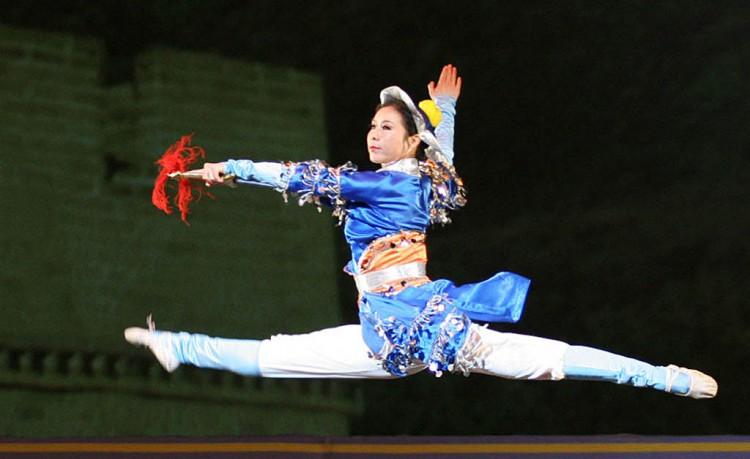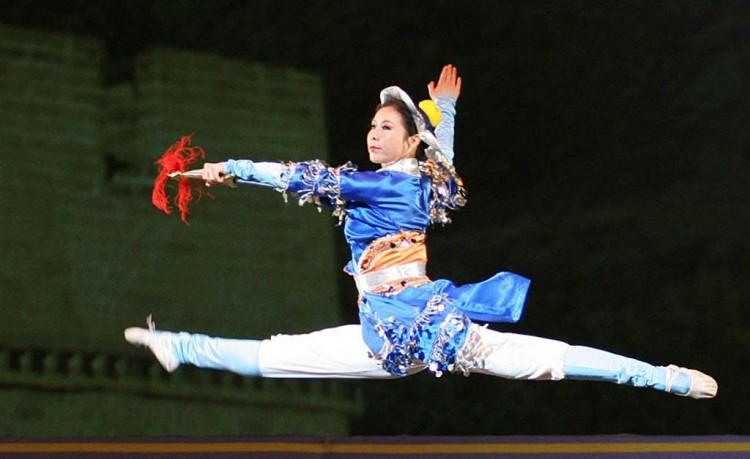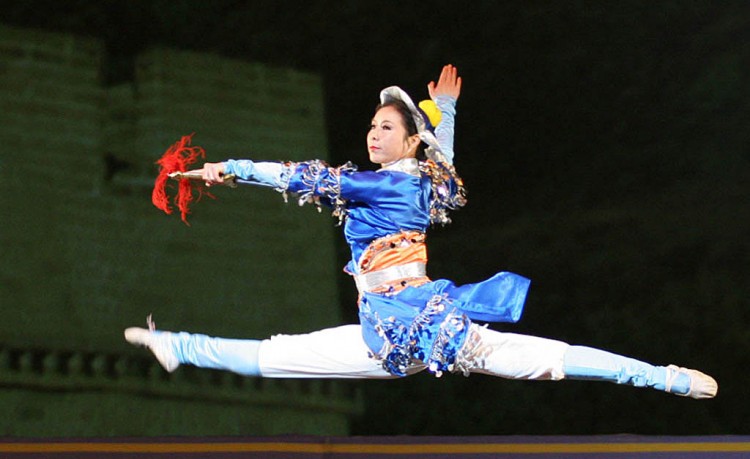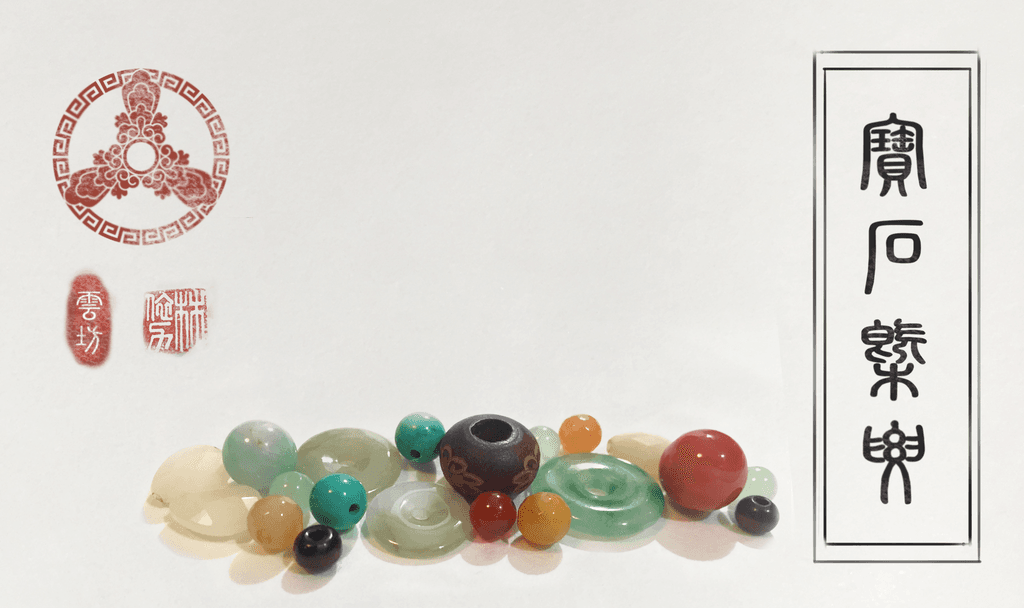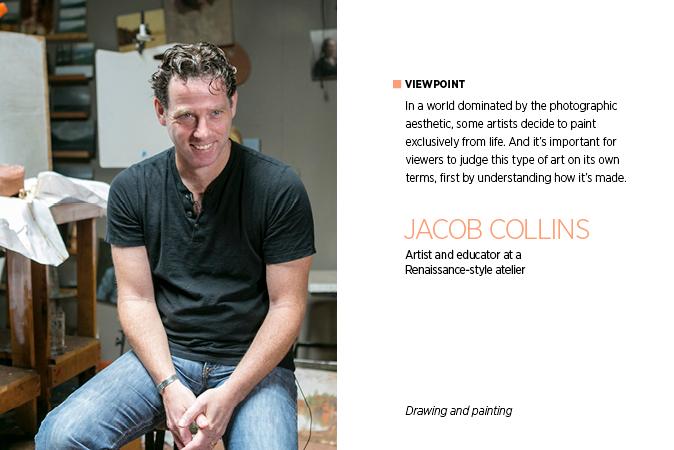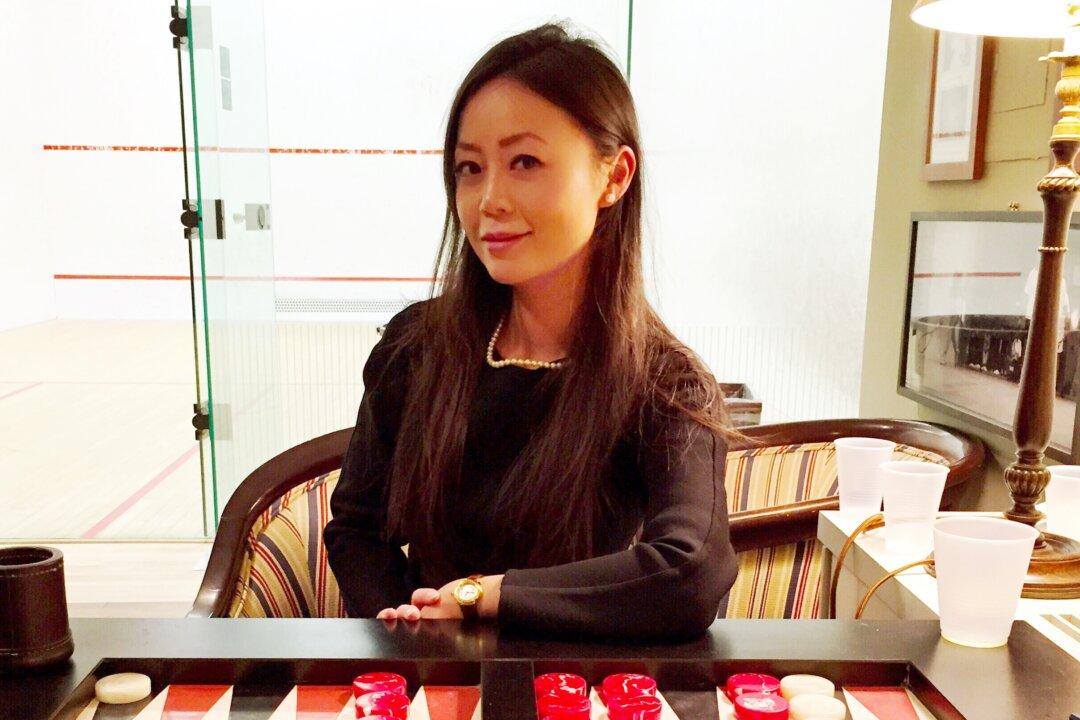All but lost in the East, the essence of an age-old culture rises in the West. This is Part 7 of a nine-part series that explores traditional Chinese culture to reveal a deeper understanding of the genius of New York-based classical Chinese dance company Shen Yun Performing Arts.
An Introduction to Shen Yun Props
Swishing, spinning, and clapping in the hands of Shen Yun’s dancers are various ingenious props, designed to visually and aurally enhance the stories they tell through choreography. Each year, Shen Yun Performing Arts brings a new program to stages all over the world, and each dance number is a snapshot of a moment in Chinese cultural history. Below are some of the ways props have been used to transform dancers into characters from China’s ancient past.
What Makes a Lady
In Imperial courts, female members of the elite were distinguished by their elegant dress. In the Qing Dynasty court, a Manchurian woman wore high-platform shoes and an elaborate headdress that lent her a noble bearing and an even, stylized gait. To highlight their beauty, ladies carried dainty silk handkerchiefs that swayed with each step and emphasized their elegant gestures.
Long, draping sleeves on ladies garments, typical of Tang Dynasty couture, also act as props in the same way. As ladies open and close their arms in dance, the brightly colored sleeves produce a tableau-like effect on stage and mimic the luxury of the court.

